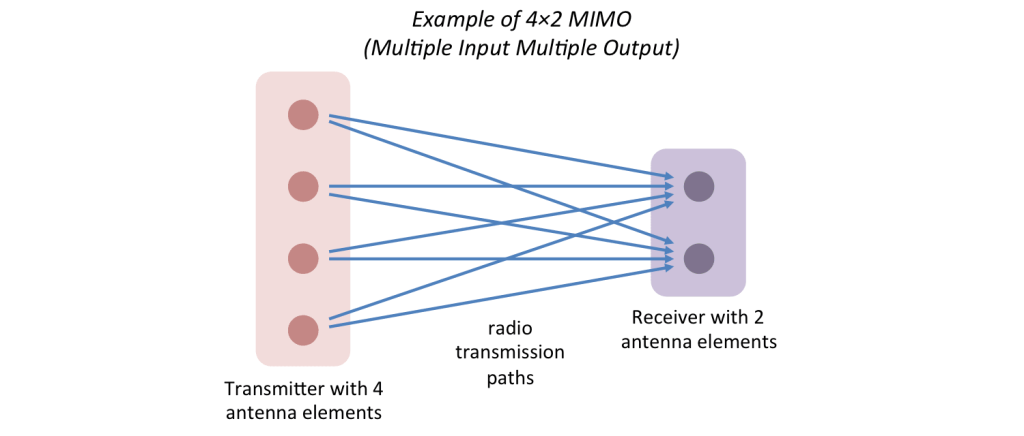
Multiple Input Multiple Output

Theoretical MIMO overview.
image ©unwiredinsight.comMIMO, is multiple input, multiple output meaning that the signals are transmitted on different frequencies to different antenna on the receiver, as can be seen in the diagram.
For example, if a phone has 2 antennae tuned to two different frequencies then it can receive half the packets on one antenna and the other half on another. To get the full transmission the packets are put together, In this example the speed of receiving the data is twice the speed of a single input. However to add complexity, and speed up the transmission, the transmitter splits the data between two different channels and uses multiplexing to send two different signals to the receiver at the same time. So with 2 channels at each of the transmitter and receiver the speed up is theoretically a factor or 4. But with 4 channels transmitted and two received in the mobile phone there is a potential factor of 8 increase in network speed.
Real MIMO is much more complex than indicated here. It all depends on network conditions, how strong the signals are. The transmitter is much more dynamic than indicated above and picks the best transmission to the receiver, dependent on these conditions.
One of the key improvements added to 5G is the ability to use M-MIMO; massive Multiple Input Multiple Output. Whilst a single device, phone or IoT device may only use 1 or two channels, the mast will have many channels and thus has a massive number of channels within which to send or receive data. Potentially the end-device could have many more channels. Automated cars or commercial drones are two potential applications where this could be advantageous.
In a traditional cell environment the "mast" will distribute the coverage over 360degrees, or where 3 antennae are used 120 degrees. But within the area covered by such an antenna some parts will have high demand, and other areas less demand. Beam forming and beam steering is a technique used with mMIMO to direct the coverage to the areas of need. This can be done dynamically, reflecting the current need.
© mobilephonetechnology.co.uk all rights reserved 2017-2025
